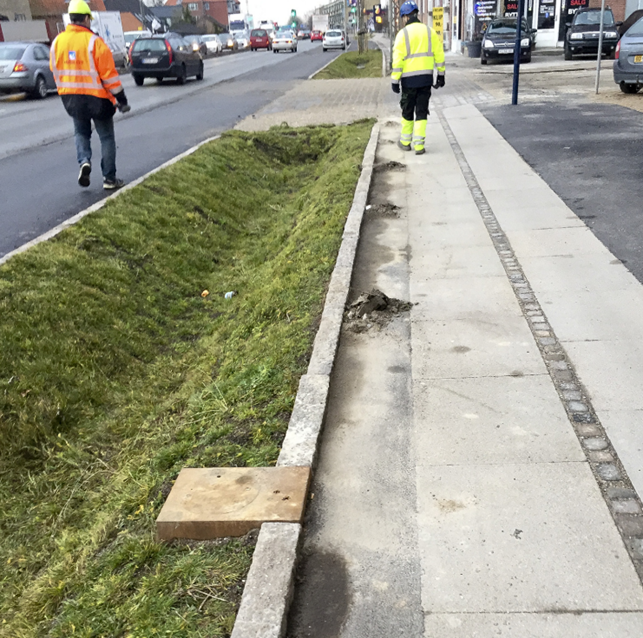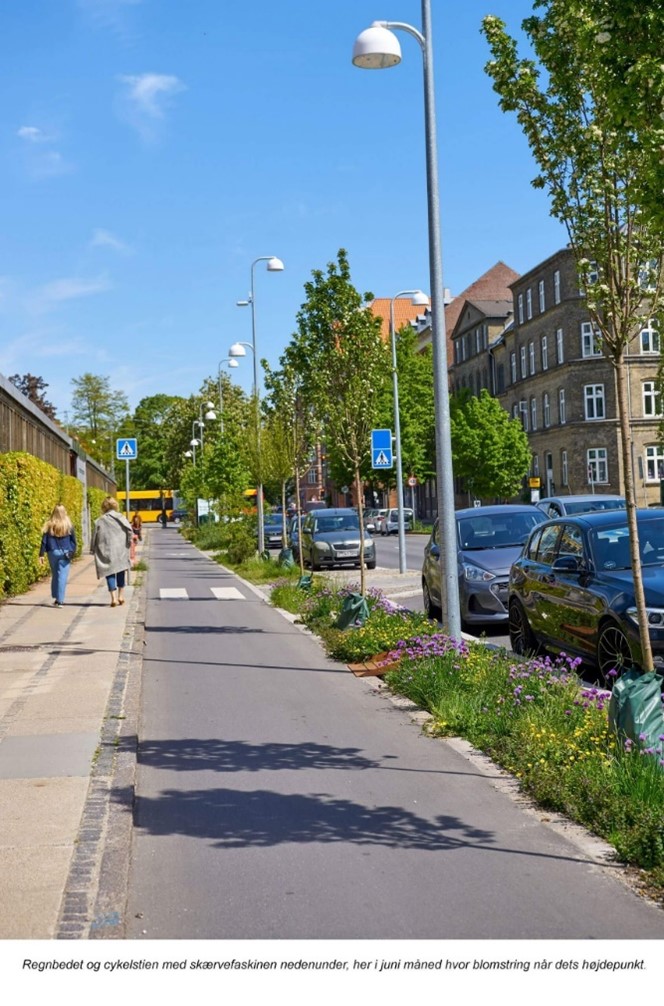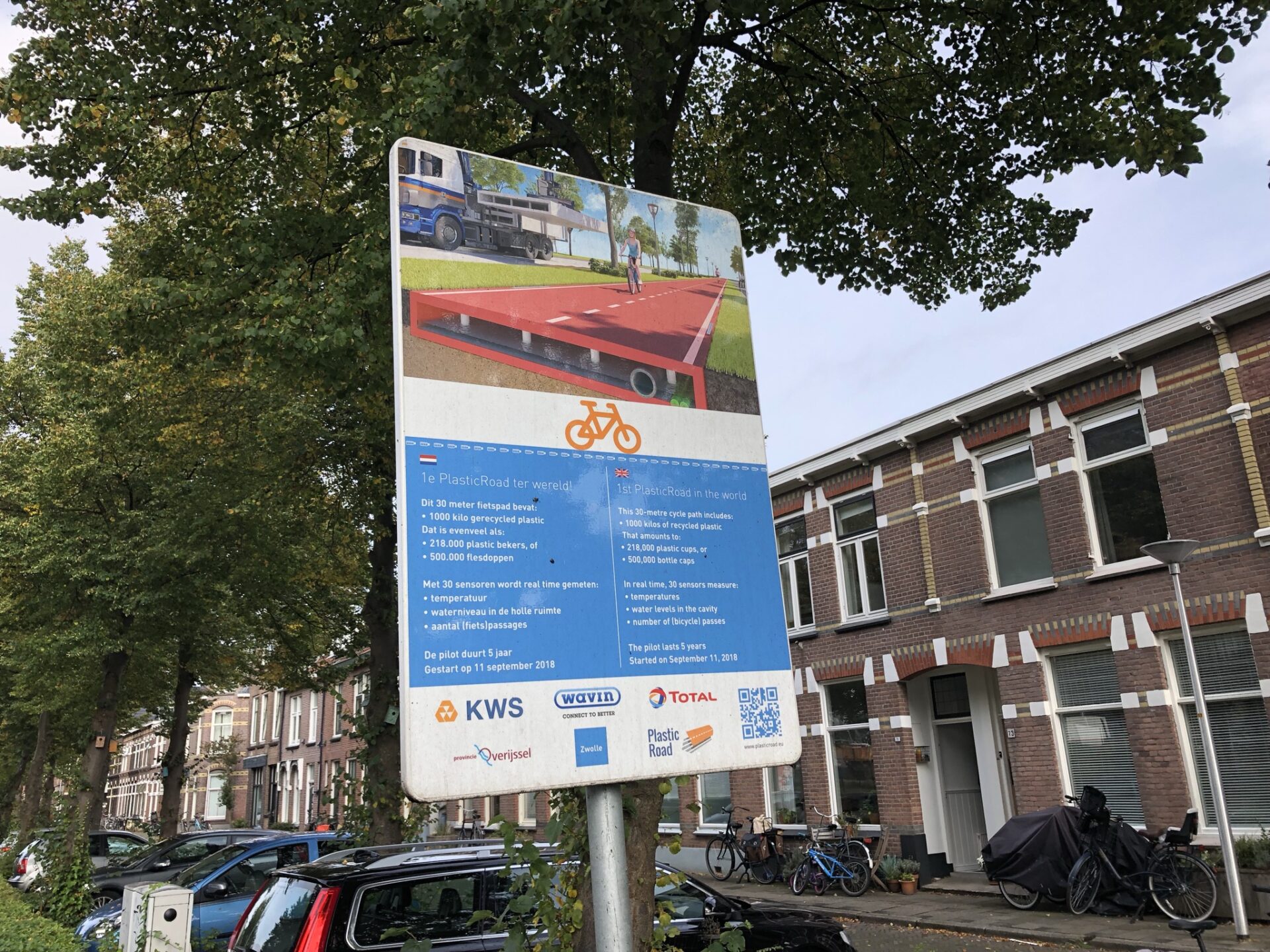In Denmark, climate change will create milder winters with more rain and warmer summers with long periods of drought and heavier rainfall. Average annual rainfall and storm intensity are increasing, and climate change will raise the water level in the seas around Denmark. It can therefore also be a good idea to work with climate adaptation measures in connection with the establishment of cycle superhighways.
To the extent that climate measures along cycle superhighways are “green”, i.e. include vegetation in various forms, they can also help to increase the attractiveness of the superhighway, and can thus serve two purposes.
This section describes a number of recommendations for which climate adaptation solutions can be implemented on cycle superhighways.
WSUD solutions on cycle superhighways
It can be a good idea to try to manage rainwater where it falls so that it does not burden the public sewer system. Managing rainwater as close to the source as possible is commonly referred to as WSUD – Water Sensitive Urban Design (or Local Rainwater Harvesting).
Localized stormwater management is any initiative that aims to limit or delay the flow of rainwater from an area. Read about the typical elements here:
Typical elements
- Drainage/infiltration from surfaces or through permeable pavements or infiltration in trenches
- Delaying the water as much as possible
- Storing the water in ditches and hollows in the ground or in dedicated retention basins
- Evaporation of the water either from surfaces or through absorption in vegetation
The individual elements can be used alone or in combination with each other..
Especially when building new cycle superhighways, it can often be an advantage to incorporate WSUD solutions to handle the drainage of rainwater from path- and road areas. This can be done by either working with drainage in ditches, planting beds and special road- and roadside installations etc.
The following is a description of a range of different WSUD solutions that can be considered for use in connection with the construction of cycle superhighways.
Find more information in the menu on the left
Drainage in ditches
The most traditional method of managing rainwater away from cycle paths is through pipes or surface channels to a ditch. From the ditch, depending on site-specific conditions, the rainwater can be led further on or the ditch can be used as a basin to delay the water flow.
Ditches can be established as a strip between the cycle path and the roadway. In this way, the ditch helps to improve traffic safety and security. Ditches can also be designed and vegetated to make the surroundings of the cycle superhighway more attractive and green.
When establishing ditches, it is important that no width is taken from the cycle superhighway for road drainage.

Drainage in roadside vegetation beds
Roadside vegetation beds are made up of a layer of filter soil with an underlying layer of sand or gravel that is suitable for infiltration of rainwater. Rainwater is typically led into one end of the bed and can be divided into several levels, where the water is stored, throttled or drains down.
A roadside vegetation bed is a planted bed where space has been excavated for rainwater to be temporarily stored and seep into the ground.
Vegetation beds can be established as a strip between the cycle path and the roadway. In this way, they also help to improve road safety. At the same time, the beds can help make the surroundings of cycle superhighways more attractive and green. When planting with, for example, tall wild flower beds, special care must be taken to ensure that the beds do not grow too tall as they tend to “lie down” on the cycle path when it rains.
When establishing roadside vegetation beds, it is important that no width is taken from the cycle superhighway.

Permeable paving
Permeable paving is a pavement where the rainwater runs down through the surface or between the elements of the pavement. The rainwater runs into the pavement’s substructure, which is designed to withstand this without reducing the service life. The water is delayed in the substructure and depending on the terrain, groundwater level and pollution conditions etc. the rainwater can be infiltrated, led to a recipient or drainage system.
Permeable paving can also be used in the construction of cycle superhighways.
Experience with porous asphalt and other types of porous materials is so far quite limited in Denmark. But abroad – and especially in the Netherlands – experiments are being conducted with new types of surfaces where rainwater is delayed in the construction of the cycle path itself. This includes a new concept where the cycle path is constructed as cassettes made of recycled plastic, which so far looks like a promising solution.

Inspirational catalog
Find more inspiration for WSUD solutions below.




